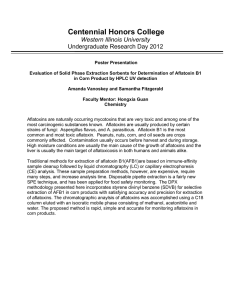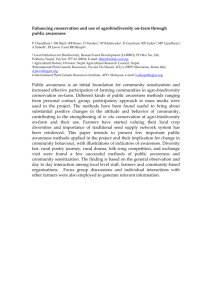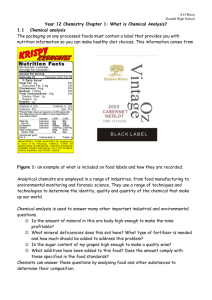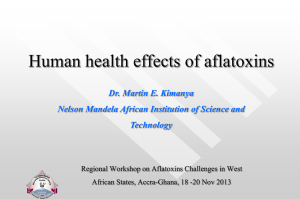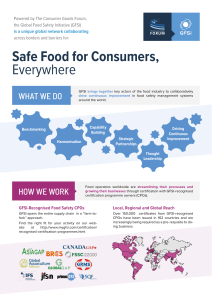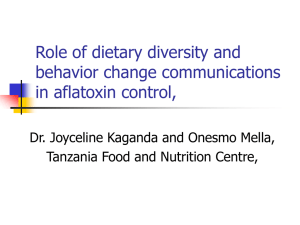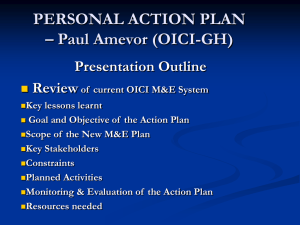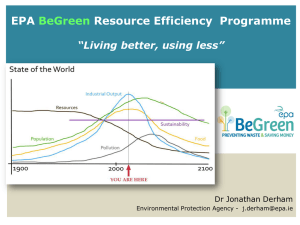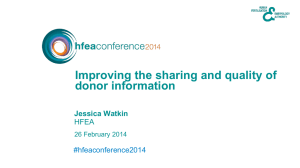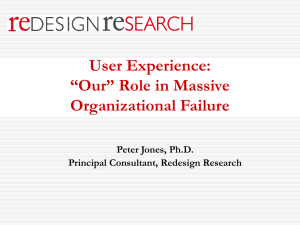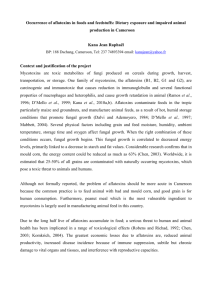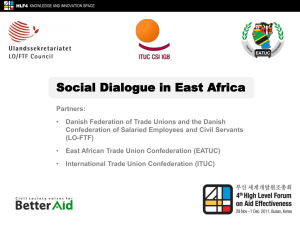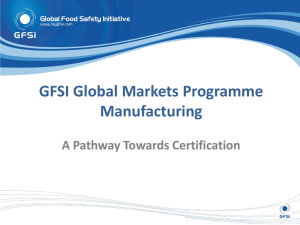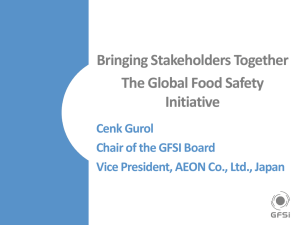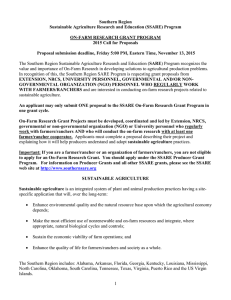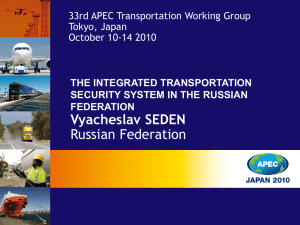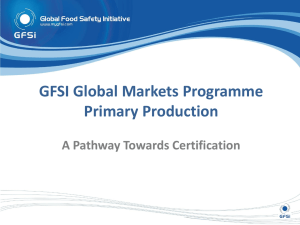GFSP Overview_ Aflatoxin Feb 14 2013
advertisement
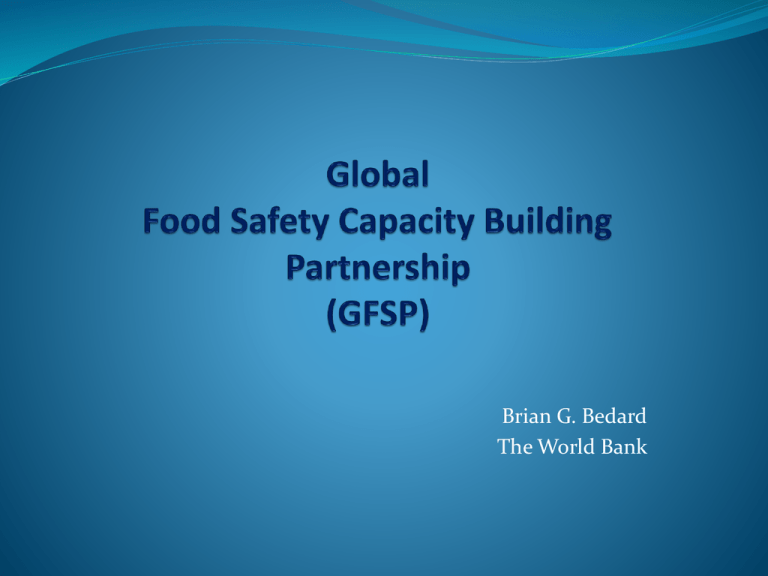
Brian G. Bedard The World Bank Global Problem Local Solutions Food Food Control System Level Policies, laws, regulations, dynamics and relationships between stakeholders, etc. a Policies, laws, regulations, dynamics and relationships between stakeholders, etc. Organization (GOVT and FBO) Level Staff, budgets, information resources, infrastructure, procedures, culture, , infrastructure, procedures, culture, etc. Individual Level Knowledge, skills, work ethics, competency, HRD Individual Level . APEC PTIN Partners • International Agencies • National • Governments • Industry •Consumer groups • Universities • NGOs • Other •Stakeholders WB Secretariat Roadmap – 5 Years Global Food Safety Partnership GFSP DGF GFSP Multi Donor Trust Fund #1 #2 #3 Training Program Implementation Global Scaling up Value chain Support Regional/County Open Education Resources Needs Assessments Curriculum Development Incident management Laboratory competency Risk analysis Food safety regulatory system On-farm GAP • • • • • • • EAP SAR LAC ECA AFR MENA Responsive activities Program Facilitation Learning Platform Food Safety Incident Network (INFOSAN/EURASFF) Communication Monitoring and Evaluation Facilitation of GFSP Approach 1. Country selection by regions 2. National food safety needs assessments 3. Country action plan i. National food safety control system ii. Agribusiness and value chains iii. On-farm food safety – GAP iv. Auditing and certification training The Capacity Building Process Consultation and dialogue with stakeholders Capacity Building Needs Assessment Analyse existing food safety capacity Define the desired future of the food safety system IaIdentify capacity gaps and needs for food safety safety Consultation and dialogue with stakeholders (internal and external) on and dialogue with stakeholders (internal and external) food safety capacity building strategy apacity buFood safety capacity building strategy ilding strategy External support (advice and/or resources) Negotiate resources (external/internal)r esources (external/internal) Food safety training activities (incl M&E)d evaluation) The MoGlobal Markets Program - Industry del GFSI Recognized Schemes 100% Matching Level 12 Months 70% 60% Manufacturin g Primary Production 12 Months 40% Primary Production 30% Manufacturin Markets g Global Basic Level Global Markets Basic Level + Intermediate Level GFSI Guidance Document Requirements (6th Edition) Understanding, Knowledge and Motivation Capacity Building Training - Technical Assistance - Education Public sector – inspectors, regulators, managers Private sector – enterprises, food business operators On-farm quality assurance: raw material supply Experts – consultants, auditors, trainers Consumers and public awareness Content design APEC Regional Food Safety Capacity Priorities HACCP China E-Learning (1 month) + Residential (10 days) Certificate Program Government, Companies, Academia Scale up in China & Globally Replicate Why the GFSP? Awareness raising Scaling up: local regional global Donor collaboration on food safety Advocacy: mycotoxins a major hazard class Cross-sectoral, coordinated approach Assimilating into ongoing programs Public good, private sector, civil society PPP Local and Global Solutions Systemic improvement and behavior change Challenges common across cultures, languages and political boundaries Global learning and information sharing Spillover effects GAP, SPS infrastructure and compliance, health and nutrition Measurable results – aflatoxins, public health indicators? Good Agricultural Practices Changing behavior Aflatoxin-resistant planting materials Aflasafe and related technologies Irrigation, fungicides, herbicides and insecticides for healthier plants Ammoniation and commercial techniques Moisture-control measures: solar drying and hermetic storage Promote safe disposal and alternative use of unsafe commodities Aflatoxins in animal feeds Communication Awareness raising and advocacy Promote aflatoxin safe value chains Agro-dealer education Educate retailers and consumers Train traders, processors, manufacturers Livestock producers Feed industry Mainstreaming Aflatoxins Government and donor programming Public health, nutrition, agriculture Value chain development and competitiveness Food safety control system upgrading Enhanced food safety laboratory capacity Import and export controls Food Safety - A Global Public Good public health poverty alleviation economic development market access / global trade food security shared prosperity social well-being innovation
